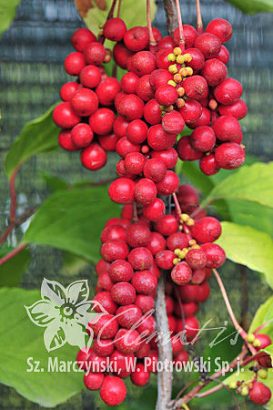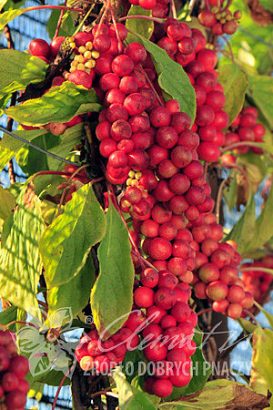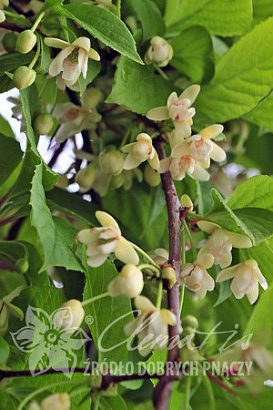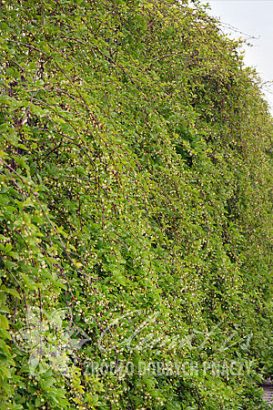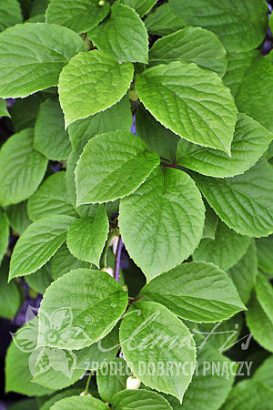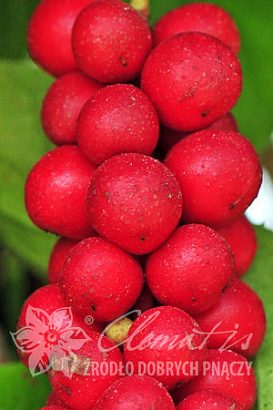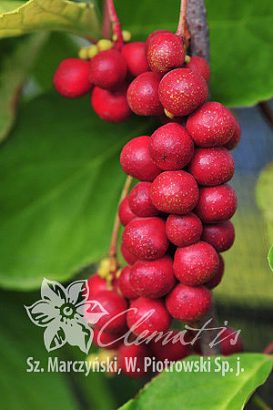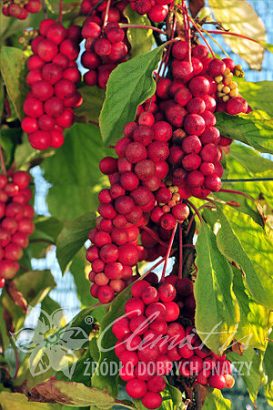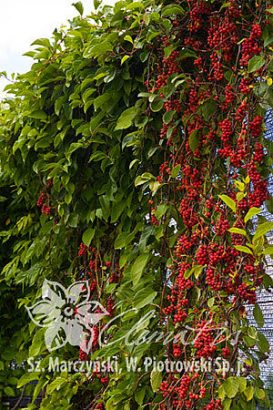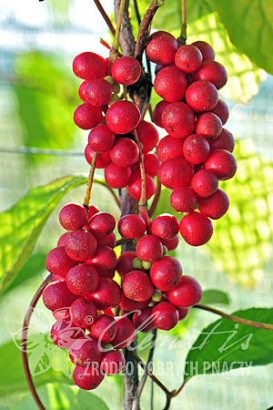Schisandra chinensis ‘Sadova No.1’, wu-wei-zi
five flavour berry (magnolia vine, wu-wei-zi) ‘Sadova No.1’| Decoration form | edible fruits, leaves |
|---|---|
| Color of flowers | white |
| Plants height | 10 m |
| Flowering month | V, VI |
| Annual growth | --- |
| Aspect | 1/2 sun, 1/4 sun, shadow, sun |
| Frost hardiness | Zones 5A - 8 |
A Ukrainian, autogamous variety abundant in fruit. Its valuable stems are used for decorative, medicinal and nutritional purposes. The fruit, but also to some extent the leaves and the bark contain schisandrine (toning and strengthening substance), Vitamin E and many minerals: iron, copper, manganese, nickel, molybdenum, titanium and zinc, as well as significant quantities of magnesium, potassium and phosphorus. It has been used for centuries in the traditional Chinese medicine. It bears fruit in the 4th-6th year after planting. The plant is frost hardy. Requires rich soil, wet but not boggy. The main attraction of Five Flavour Berry are the fruit that can be eaten fresh, dried or processed into juice, extract, infusion, tincture etc. Dried leaves can be brewed like tea and they taste similarly to Green tea with lemon. It has toning effect on nervous and respiratory systems and has strengthening properties. Schisandra products are used for physical and mental tiredness, sleepiness, exhaustion, depression, anaemia, lung, liver and digestive tract illnesses and for poor eyesight. They are not recommended to use them when hyperexcitability, sleeplessness, heart disease or hypertension occur. In the far East it is the most popular medicinal plant apart from ginseng. In China it is called wu-wei-zi, which means five flavour berry: the aril is sweet, the pulp – sour, the seeds tart and bitter and seed extract have salty taste. Particularly useful for planting along fences and building walls, but can also be trained over arbours, pergolas and other supports.

